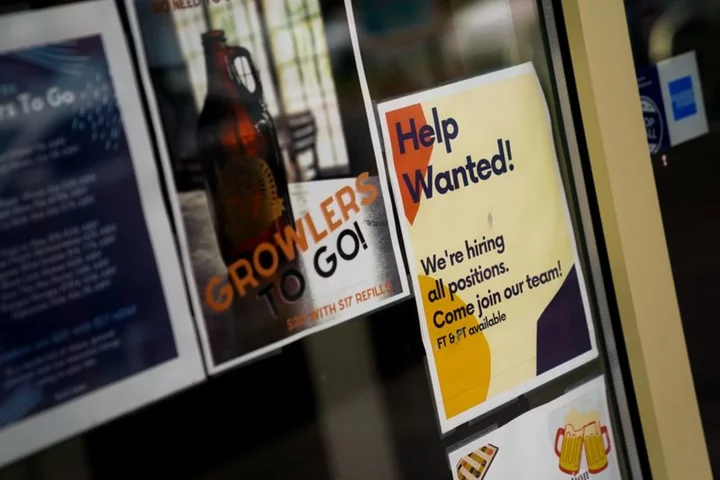By Lucia Mutikani
WASHINGTON U.S. job growth surged in September, suggesting that the labor market remains strong enough for the Federal Reserve to raise interest rates this year, though wage growth is moderating.
Nonfarm payrolls increased by 336,000 jobs last month, the Labor Department said in its closely watched employment report on Friday. Data for August was revised higher to show 227,000 jobs added instead of the previously reported 187,000.
Economists polled by Reuters had forecast payrolls rising by 170,000 jobs. Estimates ranged from 90,000-256,000 jobs. The larger-than-expected increase was despite the tendency for the initial September payrolls print to be biased lower because of seasonal adjustment issues related to the return of education workers after the summer break.
The economy needs to create roughly 100,000 per month to keep up with growth in the working-age population.
The labor market's resilience, 18 months after the Federal Reserve started raising interest rates to cool demand, suggests that monetary policy could remain tight for some time.
Most economists do not believe that the U.S. central bank will hike rates again this year. Since March 2022, the Fed has raised its benchmark overnight interest rate by 525 basis points to the current 5.25%-5.50% range.
There was no impact on payrolls from a strike by the United Auto Workers (UAW) at General Motors, Ford Motor and Chrysler parent Stellantis. The strike by roughly 25,700 of the 146,000 UAW members started towards the end of week that the government surveyed businesses for September's employment report.
There was no boost from the end of a months-long strike by Hollywood actors, as they returned to work after the payrolls survey period. The unemployment rate was unchanged at an 18-month high of 3.8%.
Monthly wage growth remained moderate, with average hourly earnings rising 0.2% after a similar gain in August. In the 12 months through September, wages increased 4.2% after advancing 4.3% in August.
Wages are still rising faster than the 3.5% pace that economists say is consistent with the Fed's 2% inflation target.
But as fewer people quit their jobs in search of greener pastures, wage growth could moderate, though recent hefty union contracts pose a risk.
Labor market strength is helping to sustain the economy, with growth estimates for the third quarter as high as a 4.9% annualized pace, more than double what Fed officials regard as the non-inflationary rate of around 1.8%.
But dark clouds are gathering over the economy amid soaring U.S. Treasury yields and political dysfunction in Washington.
Millions of Americans resume student loan repayments this month, which economists say will weigh on consumer spending, impacting purchases of long-lasting manufactured goods, houses as well as travel and entertainment, with ripple effects on employment. Economists estimate that the expiration of the more than three-year moratorium could cut at least $400 per month from budgets of households carrying student debt.
(Reporting by Lucia Mutikani; Editing by Andrea Ricci and Chizu Nomiyama)









